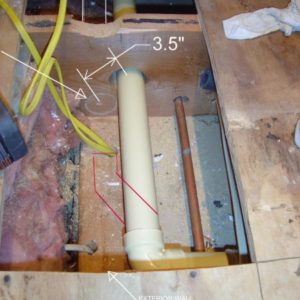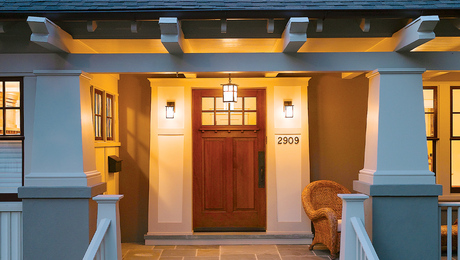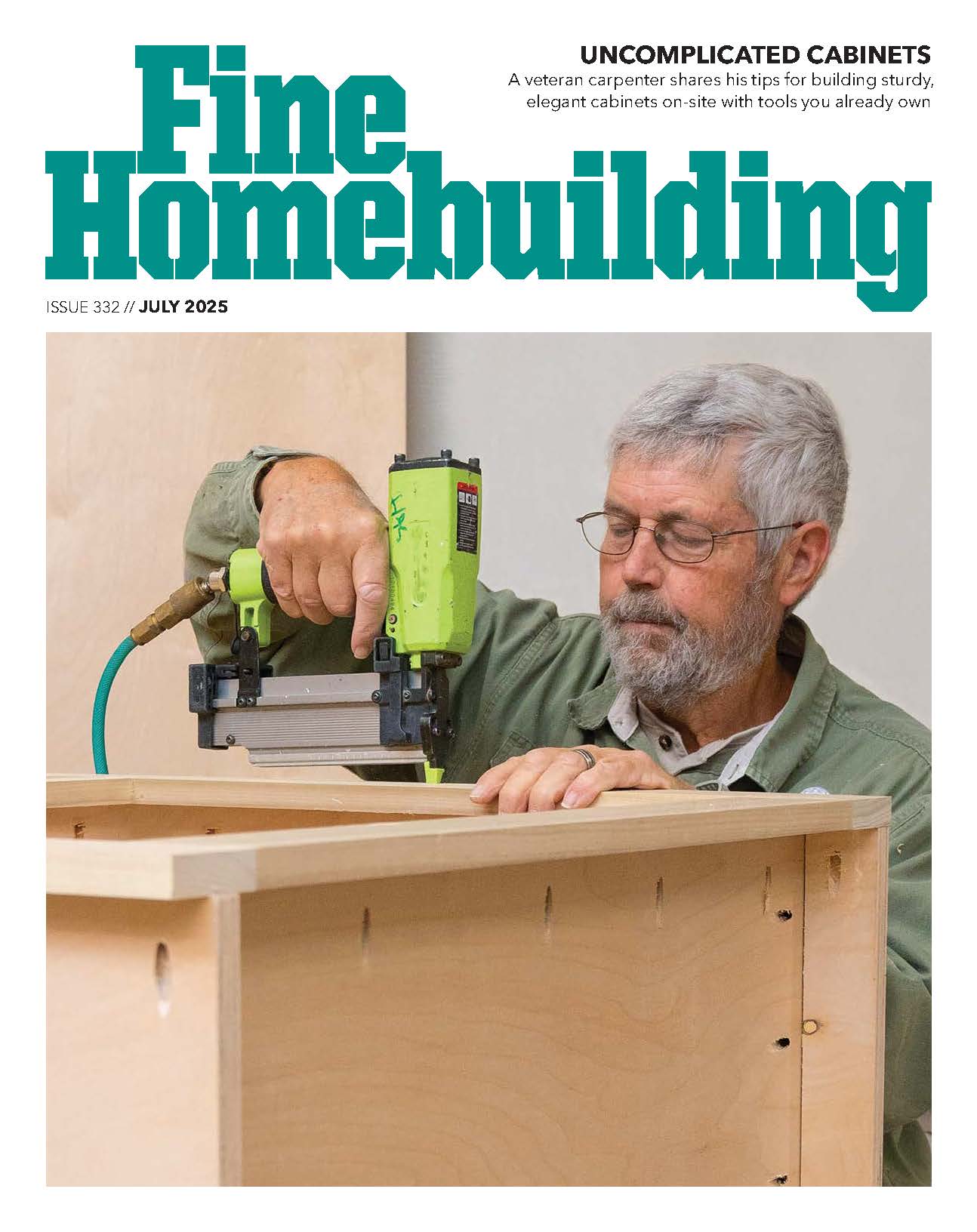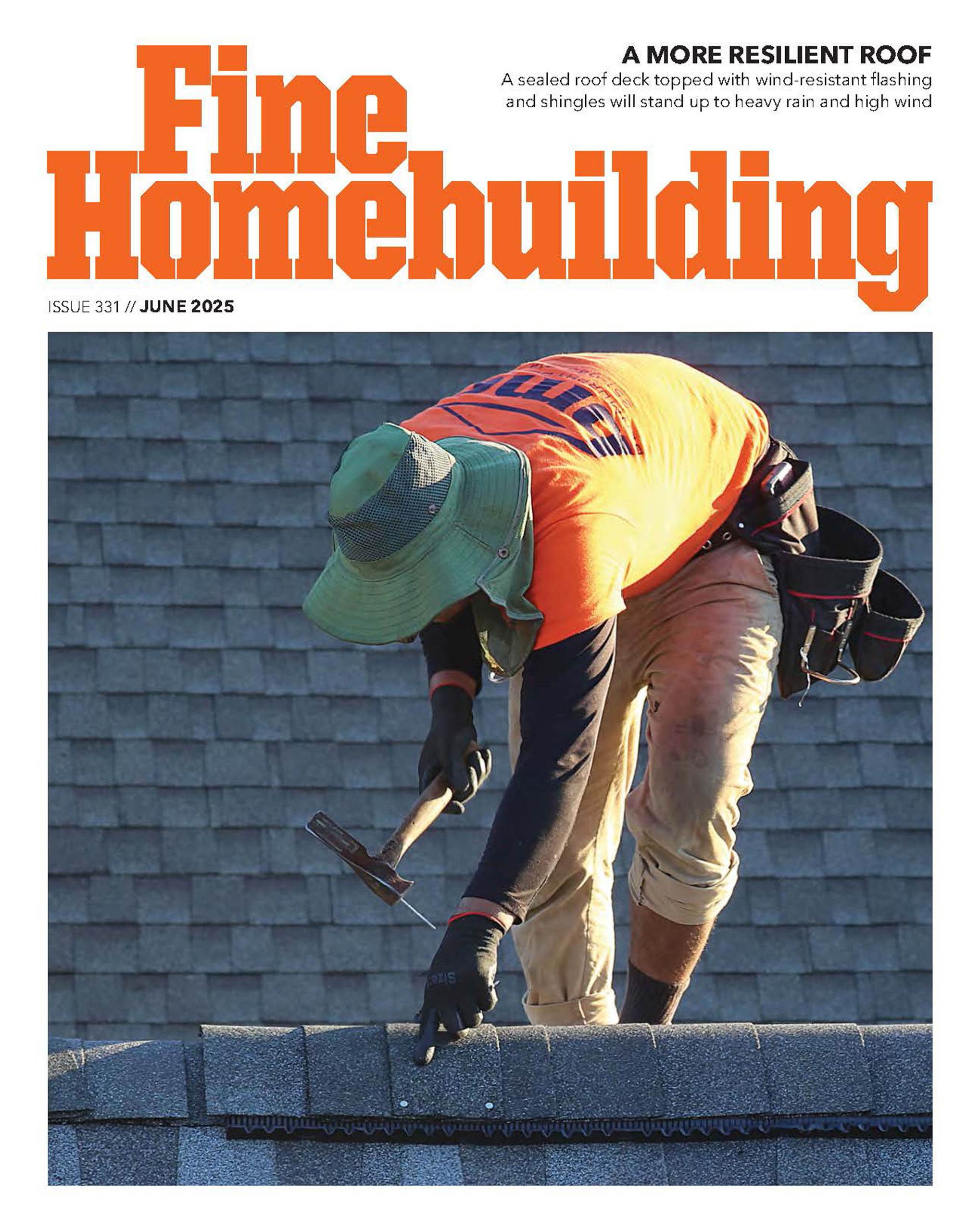Hello all, <!—-><!—-><!—->
See photo that shows a hole I would like to drill for a tub drain in a 2nd floor master bath. To the left of the indicated exterior wall is a 15″ overhang of the 2nd floor over the 1st floor. The red sketched lin is the Y I want to add in and is 3.5″ on center. The tub drain drops just behind the joist. My other option would be is to move the tub approx 4″ so the drain drops in front of the joist. The Y being added is lower than the pipe I am tying into which would act as the drain trap.<!—-> <!—->
Any objections to drilling through as shown?<!—-><!—->
Thanks, Anthony<!—-><!—->
Edited 5/30/2007 10:20 pm ET by abutcher




















Replies
That is dangerously close to the bottom of the joist. The hole should be in the center of the joist.
"Put your creed in your deed." Emerson
"When asked if you can do something, tell'em "Why certainly I can", then get busy and find a way to do it." T. Roosevelt
resized picView Image
Edited 5/30/2007 11:13 pm ET by Ragnar17
Not a plumber, so I'm asking for my own sake as well....is it not possible to add a connection to the existing waste line right where you have the tub drain sketched, as opposed to where you show the connection to be made? (Thus removing the need for another hole in joist.)
J. D. Reynolds
Home Improvements
is it not possible to add a connection to the existing waste line right where you have the tub drain sketched
I was wondering the same thing.
Another thing I noticed.... there's a sharp 90-degree turn near the bottom of the photo. If this is a waste line, shouldn't that be a long-radius bend? Maybe we're looking at a vent line.
To the left of the indicated exterior wall is a 15" overhang of the 2nd floor over the 1st floor.
So if I'm understanding you correctly, the second floor is cantilevered over the exterior wall you've indicated. That is, there aren't any posts or brackets on the exterior to support the weight of the overhang?
If this were just the end of the second floor I wouldn't be worried about drilling where you've indicated, but if it's cantilevered there could be some problems, because I think there will be bending loads on the joist right over the exterior wall.
The funny thing is: I think the cantilever will create tensile stresses in the top of the joist -- right about where somebody notched out a crescent!
Maybe you could sister on 2x4s on each side of the "modified" joist to try to repair this damage.
I'm not sure about drilling the hole where you've indicated. The cantilever makes me very nervous about reducing the cross section where the stresses will be maximized.
One thing you mentioned that no one else has addressed -- using the wye as a trap. I've never seen that done. I would worry that the length of pipe holding water would be too long and would tend to accumulate sludge too easily. Maybe someone with more smarts than me would care to comment on this?
Also, it seems you want to keep the existing line. What is it's use? Is it a vent, as another poster suggested? If so, you may be getting into wet venting issues -- a whole other can-o-worms.
Mike Hennessy
Pittsburgh, PA
There is not much room on the other side of the joist to hook up the drain, but not impossible. The pipe shown in the photo goes up to vent and connects to a sink off to the right of the photo, then heads down the picture, to a main stack. The Y and the hole was suggested by my neighbor who is a master plumber.
I put the notch in the top to clear the drain pipe in the tub, I thought the notch was safe, but I have no problem and would feel better if I reinforce it.
What I might be able to do is run the drain up to a T in the vertical part of pipe in the top of the picture....
Thanks everyone for your input!
Anthony
"the hole was suggested by my neighbor who is a master plumber."
Ahh. That explains it! A plumber. It's a wonder he didn't just say to cut out the whole thing! ;-) (My experince with plumbers butchering structural framing has not been pleasant.)
Still confused - you say the pipe is connected to a sink. Does the sink have a separate vent, or is this pipe the vent? If the latter (which I suspect it is, given your description, the short 90° and the path of the pipe in the photo), you'll have a wet vent. These are *sometimes* OK, but the rules for them are strict and beyond my ken. You'll want to check that out further.
I'm still not convinced about the wye. However, if it IS acceptable, why not raise the level of the horizontal right there at the wye and take it through the joist in the center? That said, you may want to run this by your plumbing inspector (and maybe your BI) before you commit to your plan. It's easier to do the job once in a way that they'll sign off on, rather than to have to re-do it once for the plumbing inspector and then again for the BI.
Mike HennessyPittsburgh, PA
"Still confused - you say the pipe is connected to a sink. Does the sink have a separate vent, or is this pipe the vent?"
Sorry for the confusion, the drain elbow at the top of the picture, goes straight up to a vent and T's off to a sink, so the flow of the drain goes down toward the bottom of the picture. It eventually drops down into a soffit in the kitchen, and then into a main stack.
Anthony
OK. Got it now. In that case, this is not a wet vent -- *provided* you also vent the tub drain separately -- which your plans do not currently show. You may also need 2" pipe for a tub and sink on one line -- check the code.
Mike HennessyPittsburgh, PA
You have to stop dealing with plumbers that don't know how to spell it; ["I bez the plummer"]. LOL......................................
"If all else fails, read the directions"
That is a really bad place to put a hole.